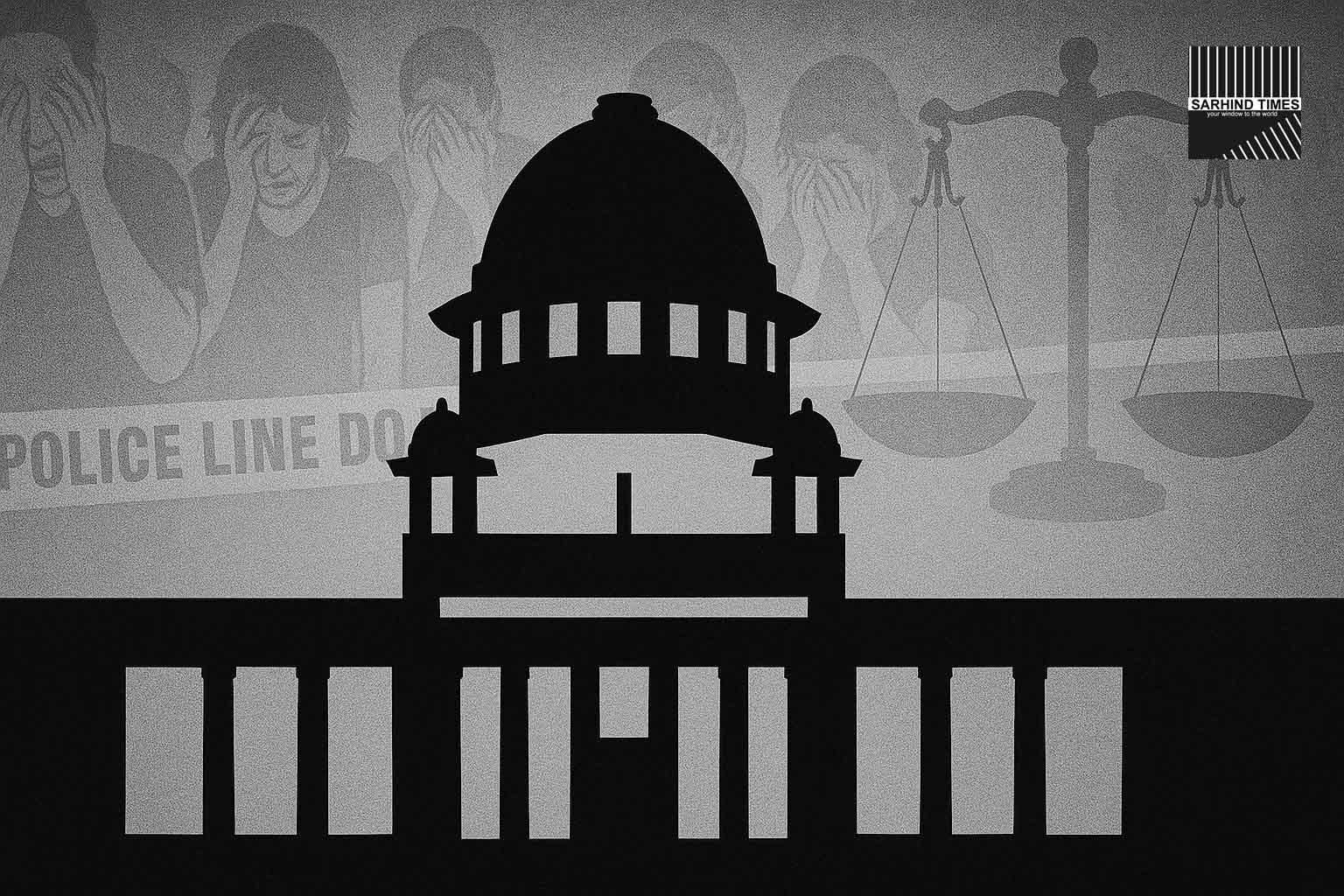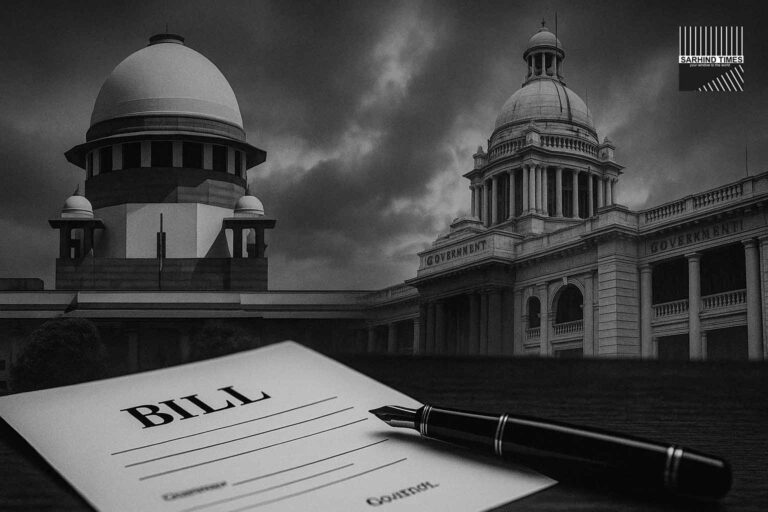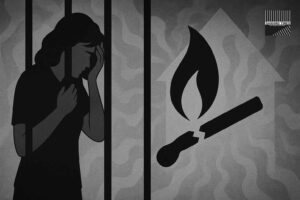New Delhi, October 12, 2025 — The Supreme Court of India is set to deliver its order on Monday, October 13, concerning a batch of petitions that demand an independent investigation into the tragic Karur stampede in Tamil Nadu, which claimed the lives of 41 people.
A two-judge bench composed of Justices J. K. Maheshwari and N. V. Anjaria reserved its decision after hearing arguments from petitioners including the political party Tamilaga Vettri Kazhagam (TVK), victims’ families, and others, who have challenged the Madras High Court’s move to constitute a Special Investigation Team (SIT) drawn from the Tamil Nadu Police
At the heart of the pleas is a demand that the investigating mechanism be independent — possibly under the supervision of the Supreme Court or a central agency — rather than being confined to state police forces. The petitioners argue that the existing processes raise questions of impartiality and procedural fairness.
Opposing the pleas, the Tamil Nadu government has contended that the High Court’s SIT is acceptable, the officers designated are reputed for integrity, and that no extraordinary measure is needed. Meanwhile, in the Supreme Court hearings, the bench itself expressed concern over the procedural pathway taken by the High Court and the jurisdictional conflict between benches.
The verdict is expected to set an important precedent — not only for the Karur case but for how courts should respond to mass-casualty incidents, the balance between federal comity and victim rights, and the standards of crowd management and accountability in public events.
Background: What Happened in Karur
To understand the stakes, a recap of the tragedy is necessary.
On September 27, 2025, a political rally organized by TVK in Veluswamypuram, Karur district, Tamil Nadu, turned tragic. A surge in the crowd during the rally led to a stampede, which by the latest counts left 41 dead and scores injured.
The rally was addressed by Vijay, the film actor and leader of TVK. The site reportedly drew far more people than authorized capacity — estimates suggest that tens of thousands gathered, far above the permitted figure.
Several factors have been flagged by police and media:
- A long delay (of several hours) in Vijay’s arrival, which may have agitated the crowd.
- Overcrowding, lack of buffer zones, inadequate crowd control measures, and possible lapses in security planning.
- Questions over whether the permissions for the event, safety norms, and protocols were properly enforced.
- After the incident, the state government named a one-member commission headed by retired High Court Judge Aruna Jagadeesan to probe the event.
- The Madras High Court, in an earlier order, constituted an SIT drawn from state police forces. The legitimacy and scope of that SIT are now being challenged before the Supreme Court.
Further complicating matters, the Supreme Court has flagged a conflict in High Court orders: while one bench declined CBI investigation, another ordered the SIT probe. The apex court raised questions about how a single bench in Chennai acted when Karur falls in the jurisdiction of the Madurai bench.
As of now, a Special Investigation Team (SIT), led by senior police officials, has begun inquiry under Madras High Court direction. The SIT has already taken over police files, visited the site, and started fact-gathering.
Another flashpoint: TVK has challenged the SIT constitution in the Supreme Court, arguing that the process and the remarks against the party and its leader in the High Court order were prejudicial.
Opposition parties and civil society have demanded a CBI or Supreme Court-monitored investigation, citing doubts over local police impartiality.
The Supreme Court’s order on Monday could determine whether the state apparatus is allowed to continue as the investigating authority, or whether external oversight is mandated.
What’s at Stake: Legal, Political & Social Dimensions
1. Impartiality & Credibility of Investigation
One core demand is that victims and public trust demand an investigating agency perceived as neutral. If the state police conduct the probe, suspicions of bias, influence or cover-up may persist. A Supreme Court or central agency direction would arguably raise confidence.
2. Precedent for Mass-Casualty Incidents
The verdict may become a benchmark for how courts handle demands for independent probes in tragedies — whether in stampedes, disasters, or large public events. The balance between state autonomy and the rights of victims to fair inquiry will be scrutinized.
3. Legal Doctrine: Federalism vs Accountability
The Supreme Court will have to navigate constitutional sensitivities: the autonomy of state governments and police forces versus the need to ensure justice transcending local pressures. This is particularly delicate in incidents involving politics and mass mobilization.
4. Crowds, Public Safety & Regulatory Oversight
The ruling may articulate guidelines for organizers, authorities, and courts on crowd management, permissions, oversight, event protocols, safety audits, and accountability of organisers and officials. This could influence future regulation of political gatherings.
5. Political Accountability & Narrative Control
Because the rally was political, with a prominent leader involved, the decision could carry political ripples. Accountability of organizers, possible prosecution, or systemic reform may shape how political parties organize large events in future.
6. Deterrence & Victim Redressal
A robust, transparent inquiry can deter future lapses, hold individuals responsible, and deliver closure or justice to victims’ families. Conversely, a weak process may erode public faith in institutions.
Key Legal Questions Before the Court
In hearing the matter, the Supreme Court will need to address several legal and constitutional questions:
- Whether the High Court’s formation of an SIT drawn from state police was legally sound
The court already questioned how the single bench in Chennai proceeded when another bench had jurisdiction. - Is a demand for CBI / central agency valid in this context?
Petitions seek a CBI or Supreme Court supervision. The court must decide if the circumstances justify such a shift from the state machinery. - Can victims demand choice of investigating agency?
To what extent can victims or petitioners insist on a particular agency? Is there a legal right to independent or external probe? - How to balance state autonomy with oversight?
The court must draw lines so as not to unduly undermine state policing authority, but also uphold principles of fairness and accountability. - What accountability should organizers and officials bear?
The decision may define the standard of duty owed by event organizers, safety officers, local administration, police, and permitissuing authorities. - Time-bound direction and monitoring mechanisms
If the court orders an independent probe, it may specify timelines, oversight, reporting standards, and who monitors them.
The manner in which the court frames its order may well influence how the state handles multiple pending petitions and how future public event regulation is shaped.
Potential Scenarios & Implications
A. Supreme Court Rules for Independent / Supervisory Probe
If the court directs an investigation under a central agency, or under its direct supervision:
- The SIT’s mandate may be expanded or replaced with an agency such as CBI or NIA, or a judicial commission.
- The court may require periodic reporting, deadlines, and transparent disclosure to court or victims.
- State police may be restrained from taking coercive or investigative steps without court oversight.
- It may embolden similar demands in other disasters/tragedies (e.g. stampedes, mine accidents, floods).
- The ruling may strengthen the rights of victims to fair process over procedural technicalities or state defenses.
B. Supreme Court Upholds SIT by State / Denies Special Probe
If the court declines external oversight and lets the High Court-nominate SIT proceed:
- It could reaffirm the principle that state police are competent to handle such investigations (barring specific reasons).
- The decision may set jurisprudence that independent probes are exceptional, not normative.
- It may draw criticism if the SIT process later appears opaque or contentious.
- Victims’ groups or petitioners may attempt further legal options (review, curative, or legislation) if dissatisfied.
C. Hybrid / Conditional Approach
The court may adopt a middle path: keep the SIT but impose additional safeguards — such as a monitored oversight committee, mixed officers or retired judges, strict timelines, independent audits, or judicial supervision. This could attempt to balance sovereignty and fairness.
What to Watch on Monday
- The text of the order — whether it orders independent probe, gives supervisory oversight, or declines.
- Timeframes imposed: how long the investigation must take, reporting intervals.
- Institutional design: which agency or structure will conduct the investigation (CBI, SIT, judicial commission, mixed).
- Supervisory mechanism: whether the Supreme Court retains a monitoring or review role.
- Accountability assignment: who (organisers, police, officials) will be explicitly held accountable or directed to be examined.
- Impact on pending petitions: many other suits and claims can follow depending on the clarity of the decision.
- Wider implications: whether the court outlines standards for public events, crowd safety, permissions, and regulatory oversight.
Voices & Arguments from the Hearing
- TVK / Petitioners’ side argued that the SIT was constituted prematurely, adverse remarks were made without hearing, and that state police may be subject to influence, prejudicing fairness.
- They also contend that petition was filed for SOPs, not seeking adverse inquiry, and that the High Court’s direction was disproportionate.
- State / Respondents countered that victims cannot dictate the investigating agency, that CBI is not warranted unless exceptional case, and that the SIT’s composition is acceptable.
- The Supreme Court itself probed the procedural irregularity: how the Chennai bench acted when jurisdiction lay with Madurai bench; how postmortems were completed unusually quickly; how the SIT order was passed in a petition seeking SOPs, etc.
The bench asked pointed questions during the hearing, indicating its concern with procedural propriety and separation of powers.
Risks & Critiques
- Delayed justice: Even after an order, actual fact-finding may drag, eroding confidence.
- Political backlash: Given the political nature of the rally, some parties may question the impartiality of the court or state.
- Implementation difficulties: Logistical, institutional, or jurisdictional challenges may hamper field investigations.
- Overreach vs underreach: A too-strong court order may be viewed as judicial overreach into state functions; a weak order may be rendered ineffective in practice.
- Victim expectations: High expectations mean any perceived lapse — lack of speed, poor disclosure, lack of accountability — can be politically explosive.
Conclusion
On Monday, the Supreme Court’s decision in the Karur stampede case will become a landmark moment — not only for the families of the 41 lives lost, but for the broader principles of justice, accountability, and public safety jurisprudence in India.
Will the court insist on an independent probe to ensure credibility? Or will it uphold the state’s right to investigate via SIT? The path it chooses could shape how tragedies are investigated in the years ahead.
The Karur case is about more than the rally and the tragedy. It is a test of institutional integrity, of the balance between state authority and people’s right to fair process, and of how India treats victims of mass tragedy. The verdict will echo far beyond Karur.
#SupremeCourt #Karur #Justice #PublicSafety #Law























+ There are no comments
Add yours